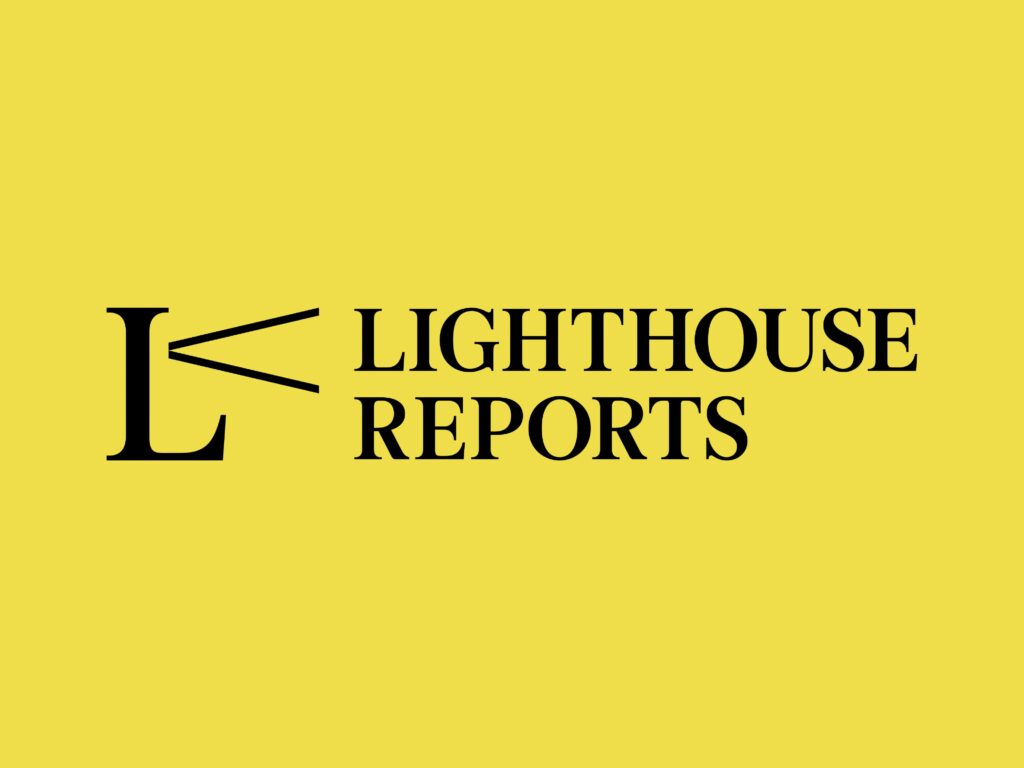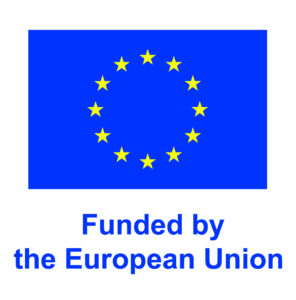Lighthouse Reports is not a media platform, but its investigations have reached over 30 million people so far. It publishes in partnership with newsrooms and media outlets around the world, collaborating with 120 media organisations and hundreds of journalists since its inception four years ago.
The organisation focuses on cross-border investigations within thematic newsrooms, covering borders, migration, food systems, surveillance and post-conflict profiteering.
Ariadne Papagapitos is part of the team of directors, together with two co-founders of Lighthouse. Her role as impact director focuses on developing a strategy to maximise the impact of Lighthouse’s investigations, ensuring that they live beyond the news pages, intersect with social change and make progress on the topics that they’re covering.
The goal of Lighthouse’s impact work is to integrate it into the regular operation of the newsrooms and make it part of the wider culture. Currently, Ariadne works alongside an impact producer. Their approach involves working with the newsrooms early on in the process to develop impact goals alongside editorial objectives and a strategy for achieving them.
To find out more about their process, I asked Ariadne about her role at Lighthouse Reports and how the strategy looks like in practice. The interview is edited for length.
Directory Editor: What does impact mean to you?
Ariadne Papagapitos: We have an explicit mandate to make progress on the issues that we cover. For us, impact looks like both shedding light on and influencing the structures that cause harm in society, but are not always immediately visible to people.
We see the ways that people can influence decision structures that need reform, but there is little that we can do as bottom-up actors when most systemic changes, whether it’s on migration or corruption or the environment or food systems, happen from top down. So we try to look at systemic problems that citizens have little visibility into and lay bare the types of systemic structural solutions that can be tackled by communities of advocates, organisers, campaigners and others.
The other important part of impact is uplifting affected communities, who don’t have the benefit of being a principal audience of investigative journalism, but about whom the stories are written. We try to democratise access to what we publish and to support the communities that we are writing about. It’s critical to our job as journalists and potentially more important than even influencing members of parliament or lawmakers. That can look like learning from them about what information gaps they have and what tools they need to affect change. And delivering the findings to them in the formats and languages that make sense. That could be TikTok videos, or publishing in multiple languages, or getting information out in WhatsApp groups or via community organisations.
We try to think beyond the publication date to the alliances and coalitions that we need to be part of, this wider ecosystem of actors that are trying to make change on an issue, to get the journalism into their hands in order for it to make as much change as possible.
Editor: Where do you sit in relation to the newsrooms? When do you come into the process?
AP: The impact team works with the newsrooms to develop a newsroom-level strategy and then at the level of individual investigations, especially the bigger ones. We try to embed the impact process throughout the lifecycle of the investigation, to develop impact objectives, and a strategy for striving toward those, alongside the editorial objectives so they are aligned.
By the time of the publication date, we’re ready to hit the ground running in terms of outreach. We’ve already briefed the people that we think need to have the information beforehand in order to act on it. We started thinking about our affected community impact approach: who do we need to be talking to? What kind of secondary coverage are we trying to achieve? What other media products do we need to create to reach affected communities? Are there members of the affected community that we want to support to place op-eds? So that’s a process that happens throughout the course of the investigation. And then of course, plenty of outreach, following publication.
Editor: On this and an idea you mentioned previously that you need to reach communities where they are, whether that’s through WhatsApp or through TikTok. How do you manage this? Do you create partnerships with people who are already in the community?
AP: We’ve just started investing more time and resources in this area of work, so what we’ve done until now has been exploratory and we are still learning. Most of the time, it is via partnerships. Which we think is important because we’re a journalistic organisation, we’re not always the best ones to be either producing TikTok videos or obviously doing policy advocacy. We work with partner organisations to provide them with the kinds of information that can support their work. That’s the community/ecosystem approach that is at the heart of our impact strategy.
Editor: What are some examples of what these media products might look like?
AP: That might look like working with an Italian Instagram influencer to produce videos for their audience on food systems and the way that Italian or European policies on meat are affecting small farmers in Italy.
It could look like partnering with a TikTok influencer who has a following of Arabic-speaking people on the move that are crossing borders.
It could look like partnering with organisations in the Netherlands that do “know your rights” campaigns for individuals and communities that have been affected by algorithmic bias that is part of the system that determines who gets welfare benefits. Or working with community organisations that teach people how they can request their data from the municipality or the national government. It takes many different forms, depending on the investigation. But is generally done through partnership, which is how we do our impact work overall.
Editor: They’re so different in terms of format, how do you measure their success?
AP: We have an impact framework where we’ve defined the big outcomes we’re striving toward – policy or institutional change, narrative shifts, corporate reforms – and then how to measure whether or not we’re getting there. Indicators of progress toward an outcome range from influencer attention or sparking an online discussion on a new aspect of a topic, getting broadcast in radio interviews, getting other organisations within our community to take up an issue in a campaign (such as a group of civil society that started a Stop Frontex campaign as a result of some of the reporting that we and others had done on Frontex), litigation being launched, requests for briefings or information from policymakers, and more.
And certainly that lives are improved, the communities of people that are affected by the topic are helped in concrete ways.
We also don’t take the position that an outcome is achieved just because of our work. Social change is a complex process and we aim to contribute to it as part of a broader ecosystem of actors working on a topic from their own angle and using their own tools.
Editor: What advice do you have for freelance journalists or journalists who are working in small groups or small media organisations who don’t have an impact division?
AP: There is a lot of material out there that can help you introduce and develop impact thinking inside any newsroom of any size. You certainly don’t have to be a big organisation to do it. I think it’s about a culture and a mindset. And so the advice that I would offer is to start by defining what impact means to you and what you’re trying to achieve with your journalism.
And then set out a path toward contributing to the realisation of those goals with some simple indicators of progress to see if you’re on track. The key is to integrate impact planning from the very beginning, from the pitch process, asking why are we publishing the story? What’s the ‘so what’? What could change as a result of this work? How could our story help? With whom do we need to partner to have an impact? And then taking it from there all the way to publication.
I think the most important thing is partnerships. If you’re a journalism organisation working on, for instance, migration and borders, you have a whole community in Europe and beyond of actors that are working on the same issue, from refugee-led organisations to human rights lawyers and campaigners. Figuring out how your journalism could support their work and how their work can inform your journalism – beyond just working with them as sources – and developing relationships of trust in the community so that you can work towards those bigger goals together. Activate and engage your networks.



